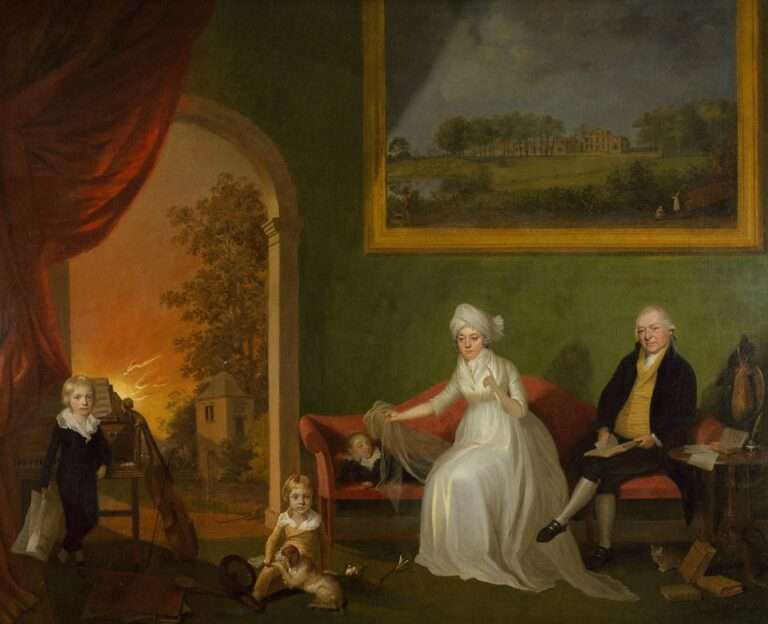Exploring the Deeper Meaning: Symbolism in The Quest
The quest is a fundamental narrative structure that has been used in literature for centuries. It is a journey undertaken by a hero or protagonist in search of a goal or object of great importance. The quest narrative often serves as a metaphor for the human experience, exploring themes of self-discovery, personal growth, and the search for meaning. One of the key elements that adds depth and richness to the quest narrative is symbolism.
Symbolism is the use of symbols to represent ideas or qualities. In the context of the quest narrative, symbolism allows authors to convey deeper meanings and themes through the use of objects, characters, and events. These symbols often have archetypal significance, tapping into universal human experiences and emotions. By understanding the symbolism in the quest narrative, readers can gain a deeper understanding of the story and its underlying themes.
Key Takeaways
- Symbolism plays a significant role in understanding the deeper meaning of The Quest.
- Archetypal symbols are essential in The Quest as they represent universal human experiences.
- The Hero’s Journey involves traversing the threshold, which represents a significant change or transformation.
- The Mentor archetype is crucial in The Quest as they guide and support the hero on their journey.
- The Quest Object represents the hero’s journey towards self-discovery and personal growth.
The Role of Archetypal Symbols in The Quest
Archetypes are recurring symbols or motifs that are found across different cultures and time periods. They represent universal patterns of human behavior and experience. In the quest narrative, archetypal symbols play a crucial role in shaping the story and its themes.
One example of an archetypal symbol in the quest narrative is the hero. The hero represents the idealized version of humanity, embodying qualities such as bravery, selflessness, and determination. The hero’s journey is often depicted as a transformative experience, where they face challenges and overcome obstacles to achieve their goal.
Another archetypal symbol in the quest narrative is the mentor. The mentor is a wise and experienced figure who guides and supports the hero on their journey. They provide guidance, knowledge, and sometimes magical assistance to help the hero overcome challenges and grow as a person.
The shadow archetype is another important symbol in the quest narrative. The shadow represents the darker aspects of the hero’s personality or the forces of evil that they must confront and overcome. The shadow often serves as a mirror to the hero, reflecting their inner struggles and flaws.
The Symbolism of the Hero’s Journey: Traversing the Threshold
The hero’s journey is a narrative structure that is commonly found in quest narratives. It consists of several stages, each with its own symbolism and significance. One of the key stages of the hero’s journey is crossing the threshold into the unknown.
Crossing the threshold represents the hero’s departure from their ordinary world and entry into a new and unfamiliar realm. This symbolizes the hero’s willingness to leave behind their comfort zone and embark on a transformative journey. It also represents the hero’s transition from ignorance to knowledge, from innocence to experience.
The threshold can take many forms in the quest narrative. It could be a physical boundary, such as a magical portal or a treacherous mountain pass. It could also be a psychological barrier, such as fear or self-doubt. Regardless of its form, crossing the threshold is a symbolic act that marks the beginning of the hero’s journey and sets them on their path towards self-discovery and growth.
The Significance of the Mentor Archetype in The Quest
| Metric | Description |
|---|---|
| Number of Mentors | The number of mentor characters present in The Quest |
| Mentor’s Role | The significance of the mentor archetype in The Quest |
| Mentor’s Characteristics | The common traits and characteristics of mentor characters in The Quest |
| Mentor’s Impact on Hero | The influence of the mentor on the hero’s journey and development |
| Mentor’s Sacrifice | The mentor’s willingness to sacrifice for the hero’s success |
The mentor archetype plays a crucial role in the hero’s journey. They are often depicted as wise and experienced figures who guide and support the hero on their quest. The mentor provides guidance, knowledge, and sometimes magical assistance to help the hero overcome challenges and grow as a person.
The mentor archetype represents the hero’s connection to wisdom, knowledge, and higher powers. They serve as a source of inspiration and guidance, helping the hero navigate through unfamiliar territory and overcome obstacles. The mentor often possesses special knowledge or skills that are essential for the hero’s success.
Examples of mentor figures in popular quest narratives include Gandalf in J.R.R. Tolkien’s “The Lord of the Rings,” Dumbledore in J.K. Rowling’s “Harry Potter” series, and Obi-Wan Kenobi in George Lucas’ “Star Wars” saga. These characters provide guidance, support, and wisdom to the heroes, helping them on their journey of self-discovery and growth.
The Symbolism of the Quest Object: A Journey Towards Self-Discovery
In many quest narratives, the hero is on a quest to find a specific object or goal. This object often holds symbolic significance and represents the hero’s inner journey towards self-discovery.
The quest object can take many forms, such as a magical artifact, a lost treasure, or a person of great importance. Regardless of its form, the quest object represents the hero’s deepest desires, dreams, or fears. It is a physical manifestation of their innermost desires and serves as a catalyst for their personal growth and transformation.
The hero’s journey towards the quest object is often fraught with challenges and obstacles. These challenges symbolize the hero’s inner struggles and the sacrifices they must make in order to achieve their goal. The quest object serves as a symbol of hope and purpose, driving the hero forward on their journey of self-discovery.
The Shadow Archetype in The Quest: Confronting Inner Demons

The shadow archetype is an important symbol in the quest narrative. It represents the darker aspects of the hero’s personality or the forces of evil that they must confront and overcome.
The shadow often takes the form of a villain or antagonist who opposes the hero on their journey. They embody the hero’s fears, doubts, and flaws. By confronting and overcoming the shadow, the hero is able to grow and transform.
The confrontation with the shadow is a symbolic battle between good and evil, light and darkness. It represents the hero’s inner struggle to overcome their own weaknesses and fears. Through this confrontation, the hero is able to gain self-awareness and achieve personal growth.
The Symbolism of the Quest Companion: A Reflection of the Hero’s Inner Self
The quest companion is another important symbol in the quest narrative. They often serve as a reflection of the hero’s inner self and help them on their journey.
The quest companion can take many forms, such as a loyal friend, a wise sage, or a magical creature. They provide emotional support, guidance, and sometimes even magical assistance to the hero. The quest companion represents the hero’s connection to their own inner wisdom and intuition.
The relationship between the hero and the quest companion is often one of mutual growth and transformation. The hero learns from the quest companion’s wisdom and experiences, while the quest companion learns from the hero’s courage and determination. Together, they navigate through challenges and overcome obstacles, ultimately achieving their goals.
The Symbolism of the Final Battle: A Confrontation with Death and Rebirth
The final battle is a climactic moment in the quest narrative. It represents a symbolic confrontation with death and rebirth for the hero.
The final battle often takes place between the hero and the main antagonist or villain. It is a symbolic battle between good and evil, light and darkness. The hero must confront their fears, doubts, and weaknesses in order to overcome the antagonist and achieve their goal.
The final battle represents the hero’s ultimate test of courage, strength, and determination. It is a moment of transformation and rebirth, where the hero emerges stronger and wiser than before. Through this symbolic confrontation with death, the hero is able to achieve personal growth and transformation.
The Significance of the Return Journey: Integration and Transformation
The return journey is an important stage in the quest narrative. It represents the hero’s integration of their newfound knowledge and their transformation as a result of their journey.
After achieving their goal or obtaining the quest object, the hero must return to their ordinary world. The return journey is often filled with challenges and obstacles, symbolizing the hero’s final test of character and resolve.
The return journey represents the hero’s integration of their newfound knowledge and experiences into their everyday life. It is a moment of reflection and self-discovery, where the hero is able to apply what they have learned on their journey to their own life.
Unveiling the Deeper Meaning of The Quest through Symbolism and Archetypes
In conclusion, symbolism and archetypes play a crucial role in the quest narrative. They add depth and richness to the story, allowing authors to convey deeper meanings and themes. By understanding the symbolism and archetypes in the quest narrative, readers can gain a deeper understanding of the story and its underlying themes.
The quest narrative is a powerful metaphor for the human experience, exploring themes of self-discovery, personal growth, and the search for meaning. Through symbolism and archetypes, authors are able to tap into universal human experiences and emotions, creating narratives that resonate with readers on a deep level.
By analyzing the symbolism of the hero’s journey, the significance of the mentor archetype, the symbolism of the quest object, the role of the shadow archetype, the symbolism of the quest companion, the significance of the final battle, and the importance of the return journey, readers can uncover the deeper meaning of the quest narrative. This deeper understanding can enrich our own lives and help us navigate our own personal quests for self-discovery and growth.
If you’re interested in exploring the symbolism of the sun, you might also enjoy reading our article on Symbolism: The Sun. This article delves into the various meanings and interpretations associated with the sun as a symbol, from its representation of life and vitality to its connection with enlightenment and spiritual awakening. Discover the rich symbolism behind this celestial body and uncover its significance in different cultures and belief systems.
FAQs
What is Symbolism The Quest?
Symbolism The Quest is an article that explores the concept of symbolism in literature and art. It delves into the meaning and significance of symbols and their use in conveying deeper messages and themes.
What is symbolism?
Symbolism is the use of symbols to represent ideas or qualities. It is a literary and artistic movement that emerged in the late 19th century and is characterized by the use of symbols to convey deeper meanings and emotions.
What is the significance of symbolism in literature and art?
Symbolism is significant in literature and art because it allows artists and writers to convey complex ideas and emotions in a more subtle and nuanced way. It adds depth and richness to their work and allows for multiple interpretations and meanings.
What are some common symbols used in literature and art?
Some common symbols used in literature and art include the rose (symbolizing love and beauty), the dove (symbolizing peace), the cross (symbolizing sacrifice and redemption), and the serpent (symbolizing temptation and evil).
What is the quest in Symbolism The Quest?
The quest in Symbolism The Quest refers to the search for deeper meaning and understanding through the use of symbols in literature and art. It is a journey of exploration and discovery that leads to a greater appreciation of the power and significance of symbolism.





